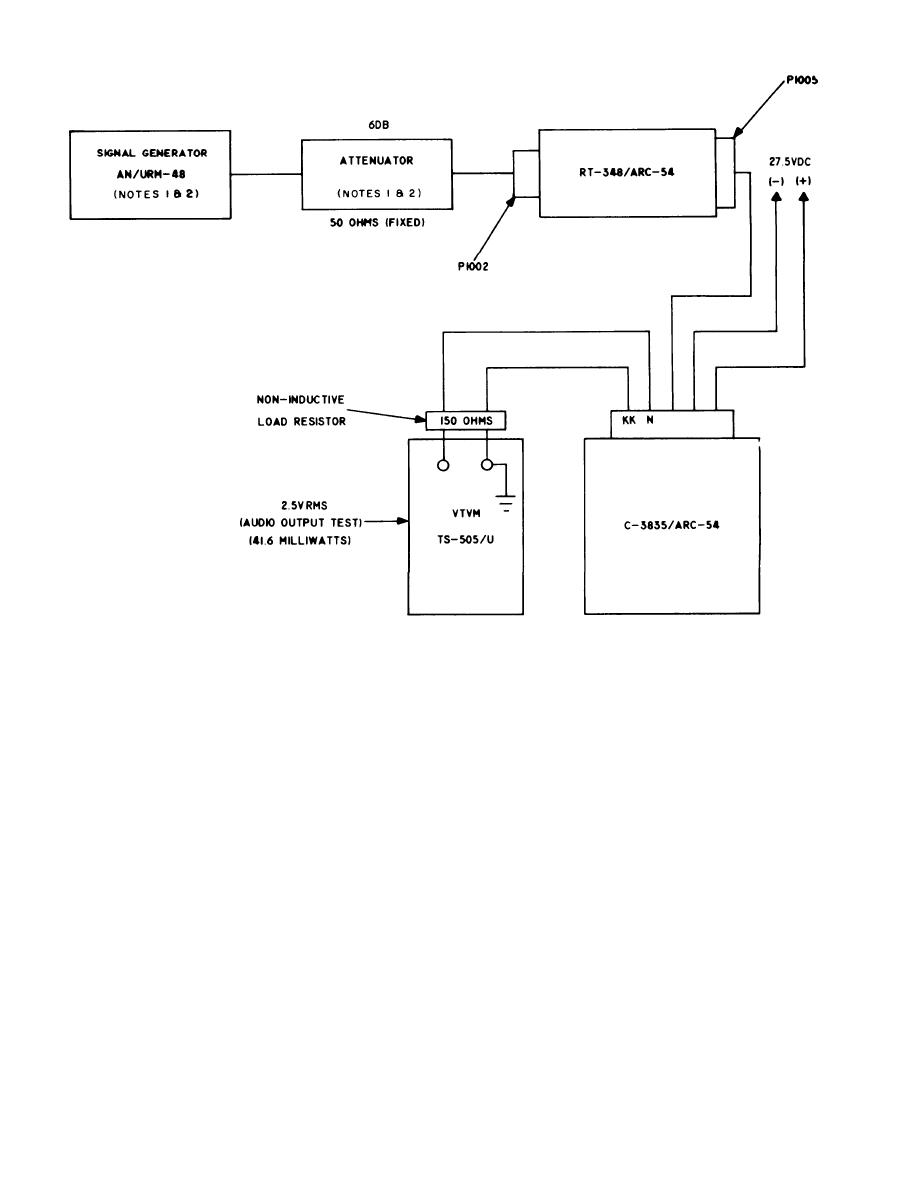 |
|||
|
|
|||
|
|
|||
| ||||||||||
|
|  NOTES:
1. SET GENERATOR TO;
A. 1.5 MICROVOLTS, FOR SENSITIVITY TEST
B. 100 MICROVOLTS, FOR AUDIO OUTPUT TEST
C. AS INDICATED IN PARAGRAPH (5) (C) FOR
SQUELCH SENSITIVITY TEST
2. DO NOT USE PADS OR TERMINATIONS FURNISHED
WITH SIGNAL GENERATOR AN/URM-48 BECAUSE
OF INHERENT IMPEDANCE MISMATCH. USE A 50 OHM
EL740-5821-91-004-SB-3
20DB PAD, WITH ANY OTHER GENERATOR USE A6DB PAD
Figure 3. Receiver sensitivity, squelch sensitivity and audio output test.
(b) Major.
homer module for a reading of 37.5 microamps on
the microamp meter, or until the signal strength
1 . Damage due to handling or storage
indicator on the ID1351 /A is centered on the
(crushed, deformed, or broken).
first dot below the rest position of the pointer.
This requirement shall also be met at one fre-
STD-252A.
quency in each of the following ranges: 30.00 MHz
3. Solderless connectors: defects as
and 67.00 MHz to 69.95 MHz. Any readjustment
listed in MIL-TD252A.
of R-211 at other than 50 MHz should be re-
4. Cabling and wiring: defects as listed
checked at 50 MHz for a compromise reading.
in MIL-STD-252A.
e. Defect classification.
5. Hardware: defects as listed in MIL-
STD-252A.
(1) Mechanical-visual.
6. Foreign objects: defects as listed in
(a) Critical. Refer to the definition of a
MILA3TD-252A.
critical defect.
14
|
|
Privacy Statement - Press Release - Copyright Information. - Contact Us |